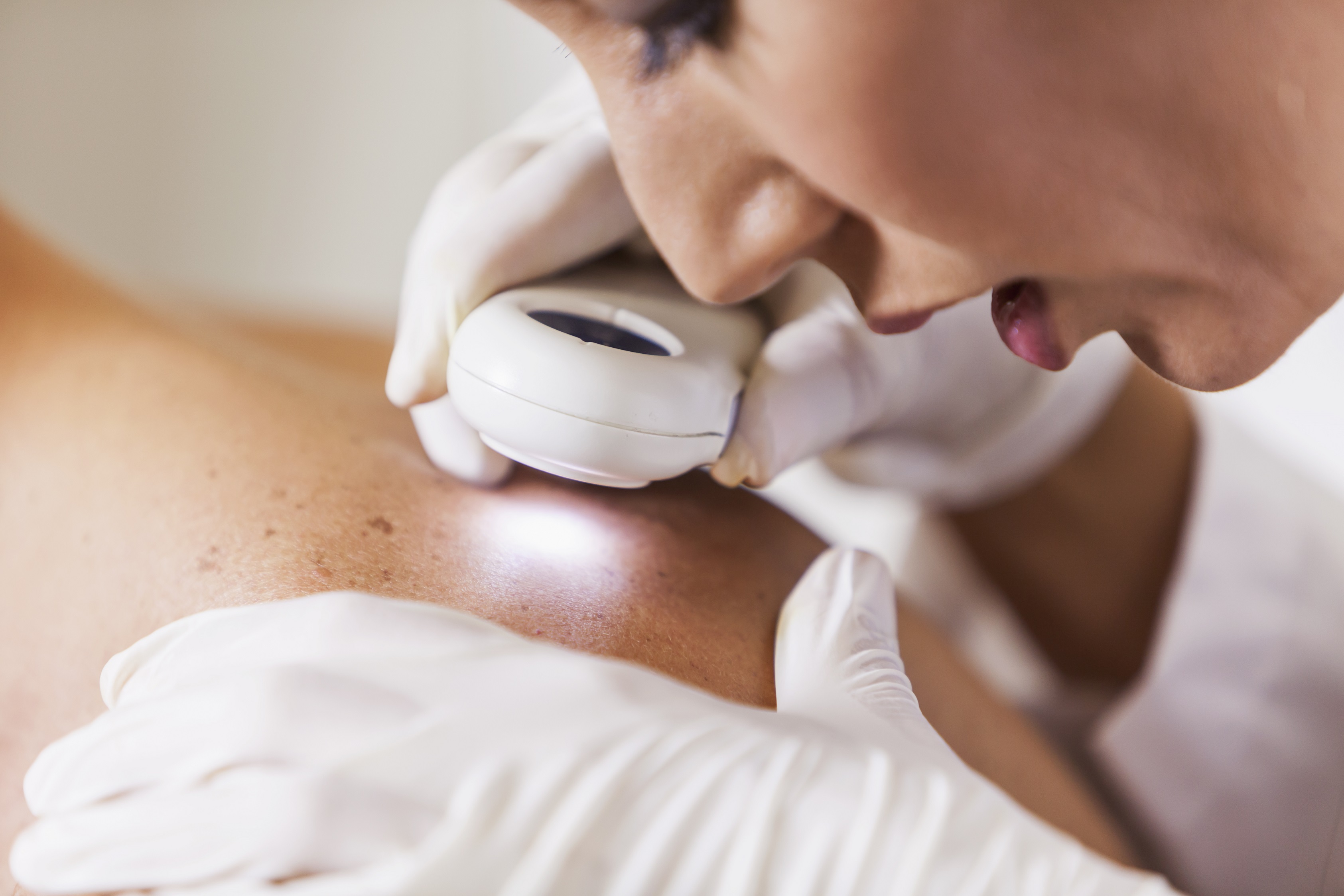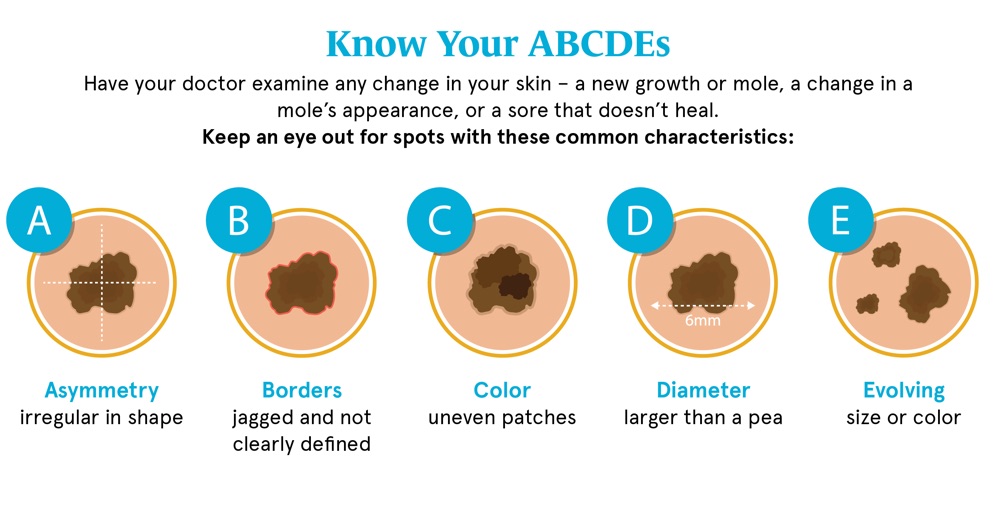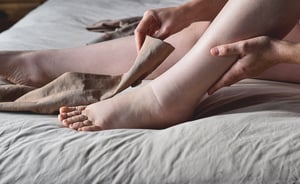Skin Cancer Screening: Know What to Look For
Find out if you're at high risk for skin cancers and how to monitor changes in your skin.

Why Is Skin Cancer Screening So Important?
When detected early, skin cancer is almost always curable. This means you need to get to know your skin through regular self-exams. Note any new growths or changes in existing moles.
Document what you find and talk to your dermatologist or primary care physician shortly after noticing any changes to see if more testing is needed.
How is Skin Cancer Diagnosed?
In many cases individuals note something different on their skin and have a doctor check it out. The doctor will determine if it's something that should be removed and then tested for cancer cells. This is called a biopsy.
Sometimes a biopsy will be performed before removing a suspicious growth. It can be done in the doctor's office, usually with local anesthetic. The type of biopsy used depends on the size and place of the abnormal area on your skin.
Common types of skin biopsies:
- Punch Biopsy: The doctor uses a sharp, hollow tool to remove a circle of tissue from the abnormal area.
- Incisional Biopsy: The doctor uses a scalpel to remove part of the growth.
- Excisional Biopsy: The doctor uses a scalpel to remove the entire growth and some tissue around it.
- Shave Biopsy: The doctor uses a thin, sharp blade to shave off the abnormal growth.
The dermatologist will never “shave off” or cauterize a growth that might be melanoma. An excisional biopsy will be performed, or, if the growth is too large to be removed entirely in the office, a tissue sample will be taken.
The results of the tests will be sent to your doctor. If cancer or pre-cancer was found, additional treatments may be recommended.

Are You at Risk for Developing Skin Cancer?
You may be at an increased risk of developing melanoma or non-melanoma skin cancer if you have:
- Red or blonde hair, fair skin, freckles and blue or light-colored eyes
- More than 50 moles
- A history of frequent or intense sun exposure
- One or more blistering sunburns in your lifetime
- A family history of melanoma
- A personal history of basal cell and/or squamous cell skin cancers
If you’re at increased risk for skin cancer, it's a good idea to have an annual skin check by your primary care physician or dermatologist.
Don't Forget!
Sun Affects Everyone!
No matter what color your skin, apply SPF 30 or higher sunscreen every day, even if it's cloudy outside or the middle of winter!

What to Look For on Your Skin
It can be challenging to identify which marks on your skin are normal and which are not, especially if you’re prone to freckles or moles. The American Cancer Society recommends that you be on the lookout for an “ugly duckling” on your skin — any mark that looks different than all the others. Additionally, the following ABCDE rule is helpful in spotting potential melanomas.
From Our Blog

Understanding and Managing Lymphedema
If your cancer treatment plan included lymph node removal or radiation therapy, you might be experiencing swelling in the area that causes discomfort...

What Does Skin Cancer Look Like? And Other Common Questions
Author: Patrick Eulitt, MD
Covering the entire body, the skin is your largest organ. So it’s not surprising that skin cancer is the most common type...

How to Practice Sun Safety After Melanoma
Author: Patrick Eulitt, MD
Melanoma is a commonly diagnosed type of skin cancer, with cases rising steadily in the last 30 years. It’s more important...

Skin Cancer Knows No Season
It is one of the most preventable forms of cancer, yet skin cancer is, by far, the most common type of cancer — and its numbers are growing....